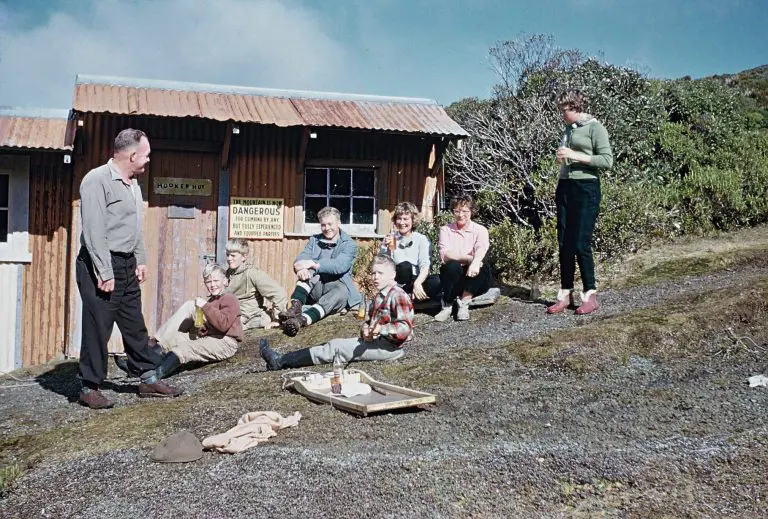“We explored all the creeks near home. I can remember sailing on evenings after school, the sun going down on the water. I’d sail through flotillas of water birds. Really peaceful. I had as good a time then as sailing around the world years later. ”
– Sir Peter Blake
From the very beginning, the sea exerted a powerful influence over Peter Blake. His family lived in a wooden bungalow in Bayswater. His father, Brian, was a gunboat captain in the Royal Navy during World War Two. Throughout their marriage, Brian and Joyce Blake owned boats and the Blake children grew up with the sea as their playground.
Peter was born in 1948, the second child of what would later grow to a family of four children: Janet, Peter, Tony and Elizabeth.
He loved playing the foreshore and boats very quickly became a passion. The family spent summer holidays camping on a piece of land they owned at Mairangi Bay, north of Auckland, next to their grandparents’ house. Peter and Tony, in particular, spent all their time on the water. “We had banana box boats,” recalls Tony. The wooden banana boxes had a rudder hung off the back, a mast, and a square sail.
Later, they camped at Martins Bay, where the children would trudge up the hill every morning to collect fresh milk, still warm, from the local farmer. In the evenings they played cards and board games – obviously the foundation of Peter’s later love of Scrabble, a game he engaged with steely and unrelenting competitiveness.
Back at home and at school, Peter dreamt about boats. He wasn’t interested in the traditional team sports – it was boats, boats, boats. Both he and Tony would pore over English sailing magazines and follow design trends with keen interest. Just as some boys drool over the latest Ferrari or Porsche, they would dream of the latest yachts and would draw their own, improved versions.
When Peter was eight years old, his father built him a P-Class yacht, a single-handed 7ft wooden dinghy which has laid the foundations of many illustrious sailing careers in New Zealand. Pee Bee was launched with all due ceremony, lemonade substituting for champagne, and Peter spent hours racing and idling about aboard.
“Friends and I used to go all over Waitemata Harbour in our Ps together and sometimes ended up being blown into the mangroves around the edge,” he wrote in his book Peter Blake Adventurer. “We explored all the creeks near home. I can remember sailing on evenings after school, the sun going down on the water. I’d sail through flotillas of water birds. Really peaceful. I had as good a time then as sailing around the world years later.”
It wasn’t long before Peter outgrew the P-Class, his knees jamming under his chin as he tried to duck under the boom during tacks and gybes. He graduated to a Z-Class dinghy, which he called Tango. It had a menacing black hull, bright orange mainsail and black and orange striped spinnaker.
“One thing I always remember with Peter,” says Tony, “was that if it was blowing hard from the south west, we would slog over to the wharves (on the city side of the harbour) and then put up the spinnaker. We would fly back across the harbour with the boat going like an absolute rocket.”


